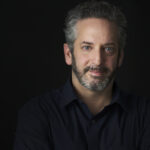 The following is an edited transcript of an interview conducted by financial advisor Darren Coleman of the Two Way Traffic podcast with eldercare expert Yvonne Dobronyi of YCD Consulting. It appeared on September 6th under the title ‘Planning for your parents and what it’s going to cost.’
The following is an edited transcript of an interview conducted by financial advisor Darren Coleman of the Two Way Traffic podcast with eldercare expert Yvonne Dobronyi of YCD Consulting. It appeared on September 6th under the title ‘Planning for your parents and what it’s going to cost.’
Click here for full link …
https://twowaytraffic.transistor.fm/episodes/planning-for-your-parents-and-what-it-s-going-to-cost
Coleman says the single biggest financial blind spot for families when planning for the future is the rising cost of eldercare and Yvonne Dobronyi agrees.
An eldercare consultant who counsels individuals and families through her firm, YCD Consulting, Yvonne says the monthly outlay for a retirement home starts at $3,600 for a single studio suite without care, but once in-home resources are included the tab can go up to $20,000 a month.
“Families are in denial and don’t want to ask difficult questions about moving Mom or Dad to assisted-living accommodation,” says Yvonne, who added that more than half the families she sees aren’t prepared for dealing with one, never mind two, elderly parents.
She says many seniors don’t understand they need to sell their home or cottage and sometimes both in order to afford retirement living if they have limited savings. And that seniors may have to work beyond their retirement years to maintain a cash flow to pay their bills even if they’re mortgage-free.
The two experts discussed a range of issues to do with eldercare:
- Who holds Power of Attorney for both property and healthcare, and what happens when one sibling has it and the other doesn’t?
- The importance of keeping these documents, along with a will, updated passport and medical records, in a designated file that’s readily accessible by a trusted contact.
- ‘Free’ (government-funded) resources like personal care and light housekeeping services are available after assessment if you qualify but only for 2-4 hours and when staff is available.
- Dealing with long wait lists for LTC (long-term care) homes, how to navigate the system, and making decisions during emotional stress.
Below is an edited transcript of the interview, focusing on the cost of eldercare housing services and families being prepared, or not prepared, for what can happen.
Darren Coleman
This is probably the single biggest blind spot most families have when they do their own planning. We can prepare for retirement, but this is where it tends to catch people off guard. I want to explore what life looks like when people suddenly have to figure out, how do I live independently for longer in my home, or what happens if I move into seniors’ housing.

Yvonne Dobronyi
Some families are well prepared, but more than half are not. They react to a situation, so all of a sudden you have a crisis. Mom has dementia and Dad’s been the caregiver and now Dad falls in the home and breaks his hip, so he has to go to hospital. Who’s going to manage Mom? That’s when families get together to figure out what sort of care is required. So some will go to hospital, and others try to manage Mom. My experience is that a lot of times they haven’t designated a power of attorney, completed a will or made funeral arrangements.
Darren Coleman
The reason I think most find they’re not prepared is that the timing of when people will need care is unknown. And people don’t know what these things cost.
Yvonne Dobronyi
Often, family members don’t know where they have an RRSP or GIC, or whether or not their home is sellable the way it is. It’s something that’s avoided because families are in denial and don’t want to ask difficult questions. But it’s our duty as family members to be well prepared and that might involve asking difficult questions.
Darren Coleman
Someone should take the lead in these things. It might be more of a formal meeting or a conversation with some structure to it.
Yvonne Dobronyi
Absolutely. You sit down and share information that will be kept confidential. And if something happens, family members are prepared and know what to do. But often this is not the case.
Darren Coleman
People may be dealing with these things while they’re in this emotional crisis. That’s not the best time to have that chat with your brother or sister about who’s going to look after Mom or Dad.
Yvonne Dobronyi
Very often a parent made a decision to give the power of attorney to one child and not the other two. Or two of them have the power of attorney and can’t agree on what the next steps might be. So one family member says we should move Mom and Dad into a retirement community or long-term care, and the other one says no.
Trusted contacts, Wills & Powers of Attorney
Darren Coleman
There’s a new administrative element for financial advisors in Canada now. It’s about adding a trusted contact to your file. So if people listening have not done this with their advisor, I recommend picking up the phone and saying I’d like to add that to my file. You mentioned the power of attorney and the will. We should point out there’s two kinds of power of attorney. Sometimes people will say, I have a will. Well, it doesn’t matter. The will only works once you’re gone, and the power of attorney is the document that works until you’re gone. So you need both of them.
Yvonne Dobronyi
The power of attorney is responsible for making decisions on behalf of that party in a healthcare capacity. Say the resident or patient has an extreme crisis situation and is now on life support. There needs to be that meeting to determine what is the best route. And that’s a difficult decision to make. I recommend you have more than one person be the power of attorney for care, so you can look at it closely and determine together what would be the best route. Continue Reading…







